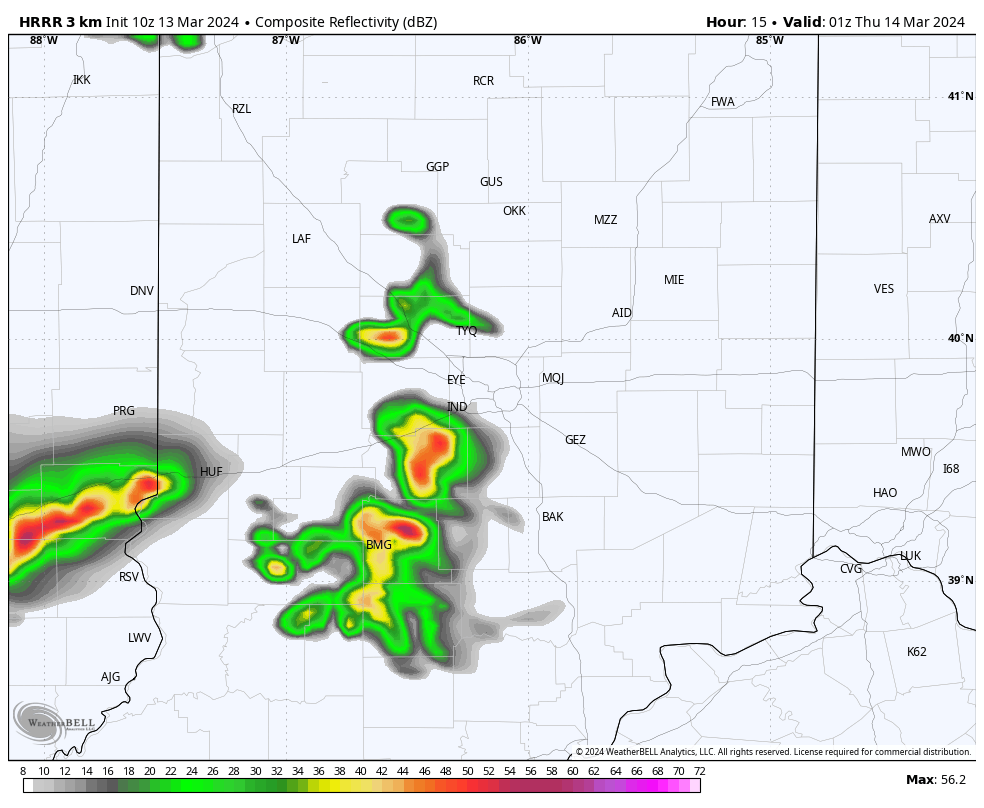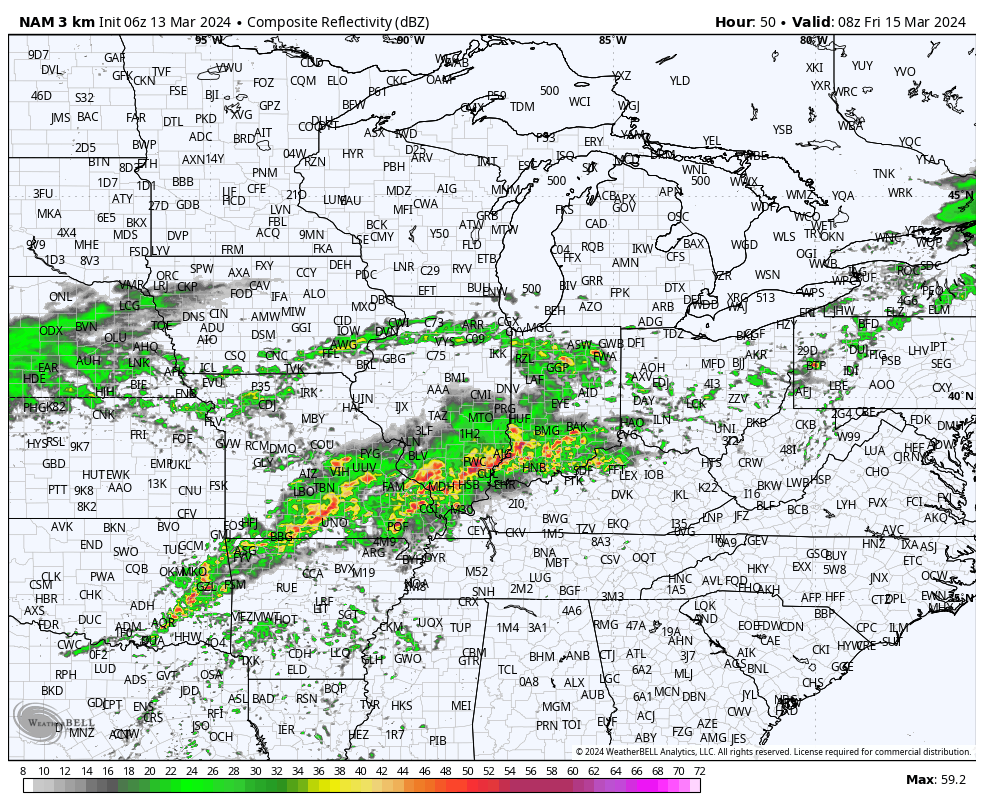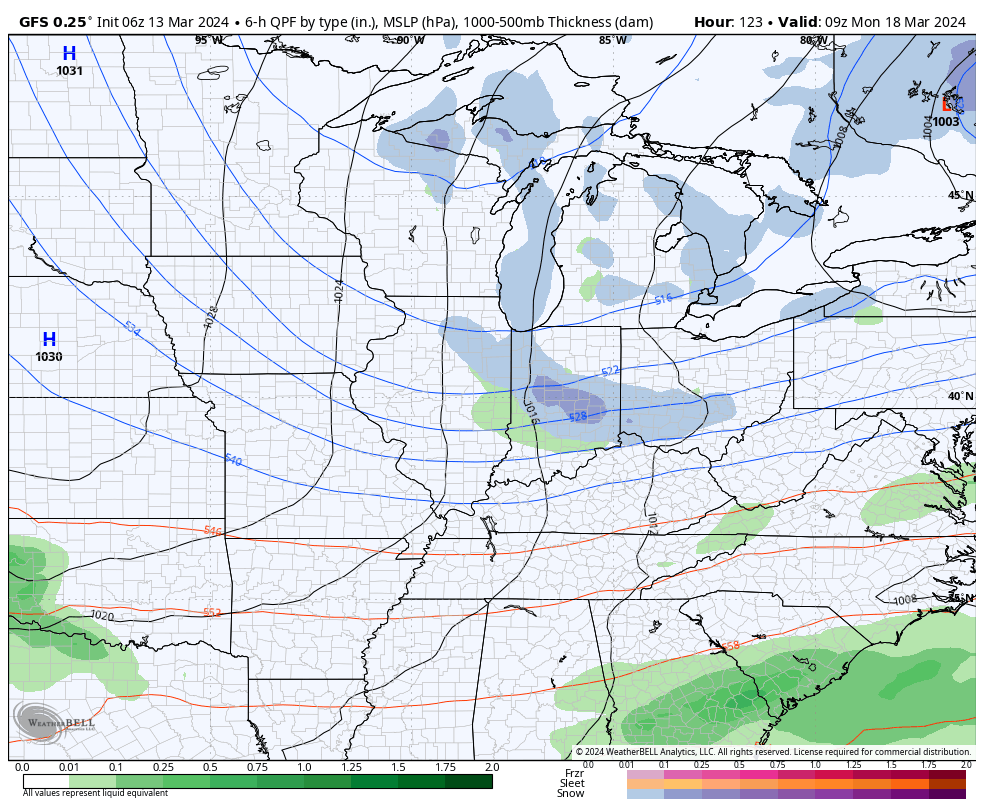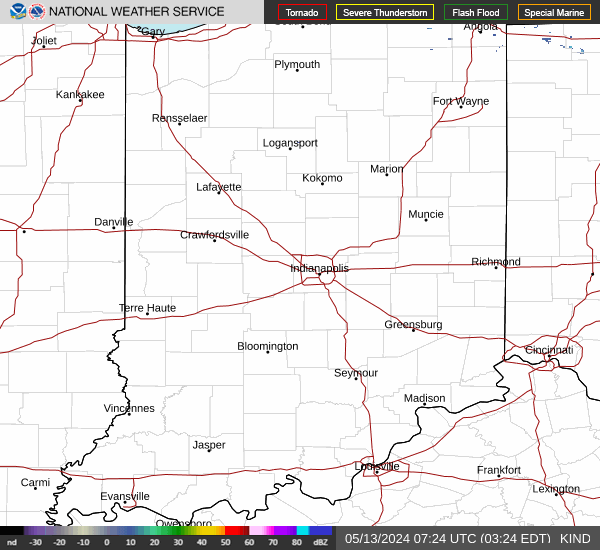Updated 03.14.24 @ 4:16p
Type: Severe Weather Outbreak
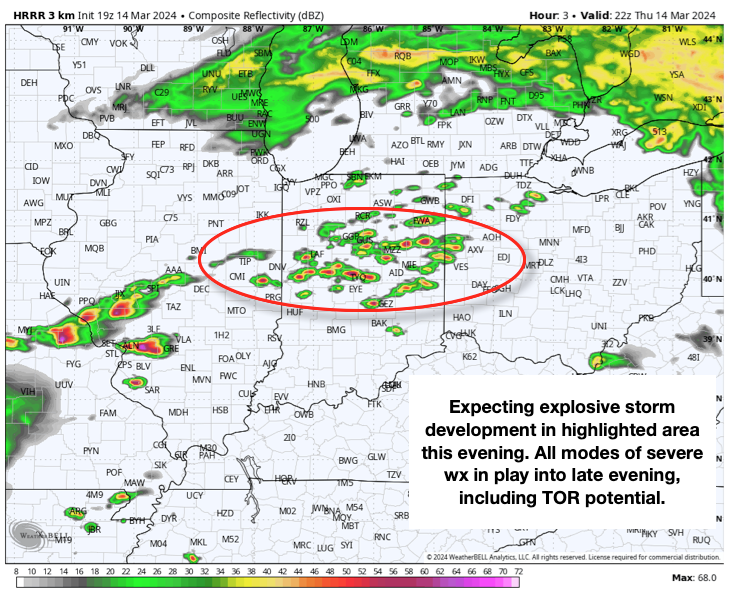
What: Severe weather outbreak
When: Tonight between 6p and midnight
Wind: Potential of straight line winds in excess of 60 MPH
Temperatures: Lower 70s falling into the 40s after midnight
Summary: While all is quiet on the radar as we type this, things will change quickly through the next hour, or so. We anticipate storms to initialize across the region around 6p and quickly intensify. Downstream radar and satellite trends pose a concerning look this afternoon, including several super cells and this activity is expected to expand into central IN through the evening. All modes of severe weather are possible, including large hail, damaging winds, and a few tornadoes. Please heed all warnings and have your severe weather safety plan activated through the evening. Thankfully, we still anticipate rapidly improving conditions north to south towards 11p to midnight.
Confidence: High

